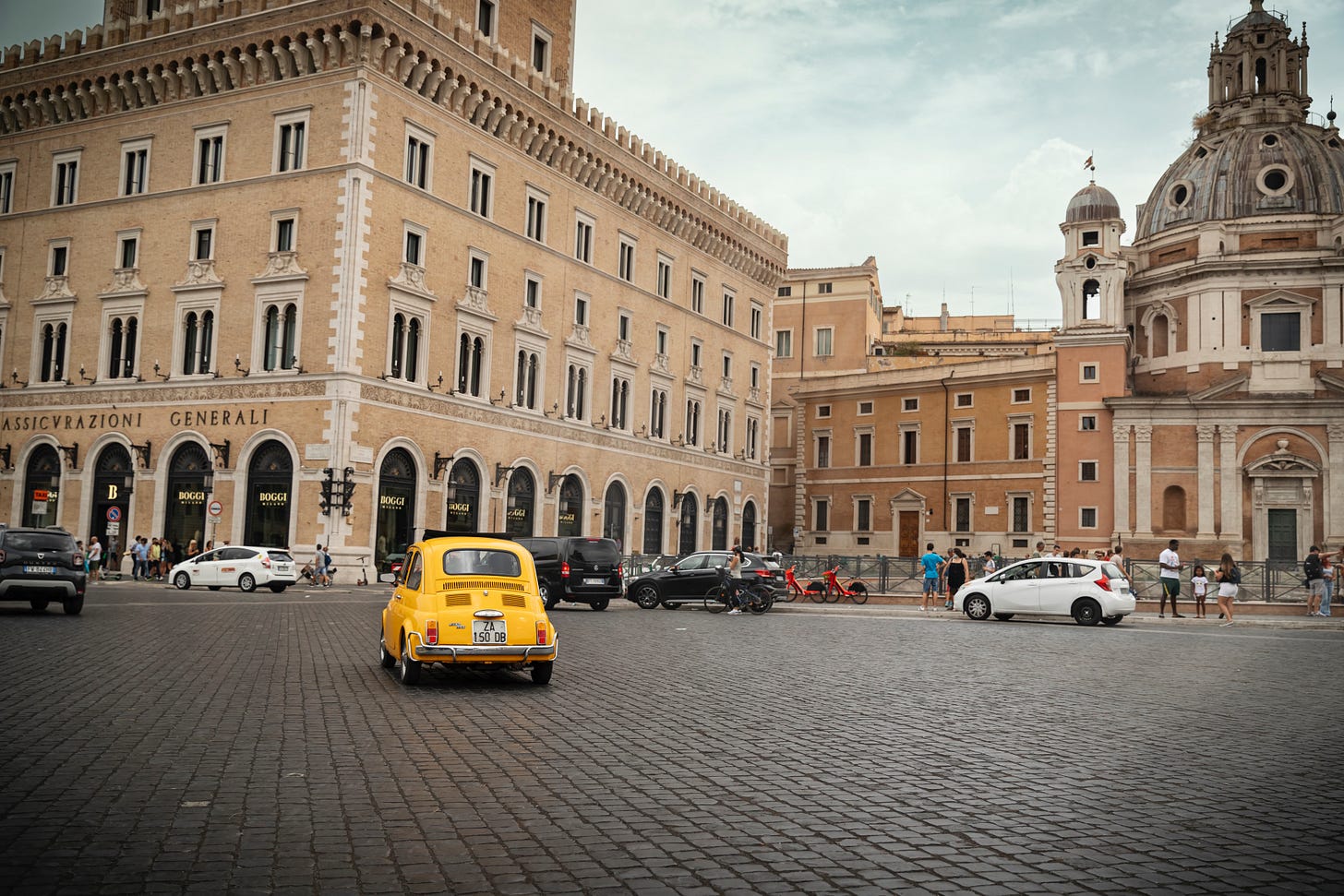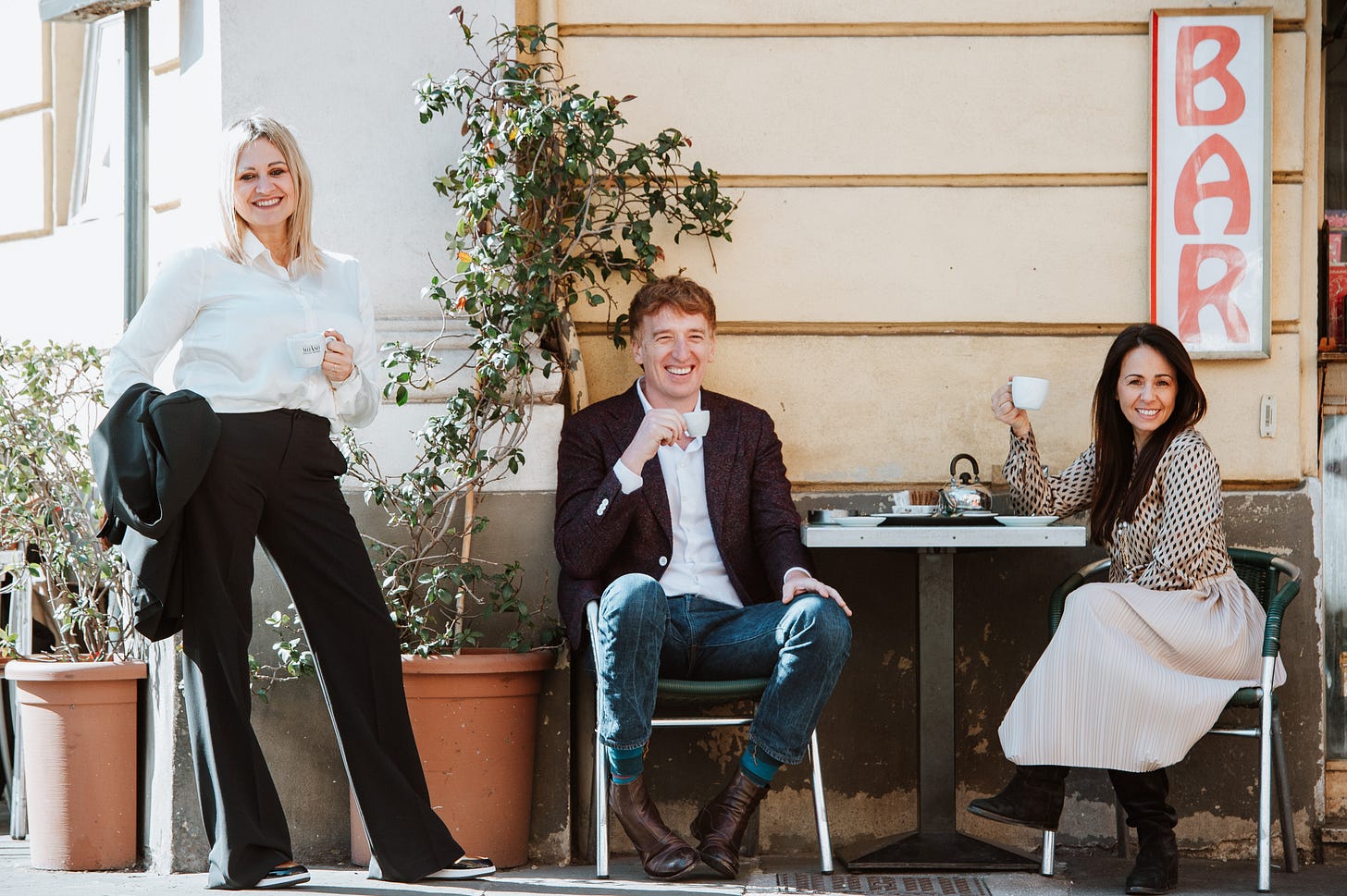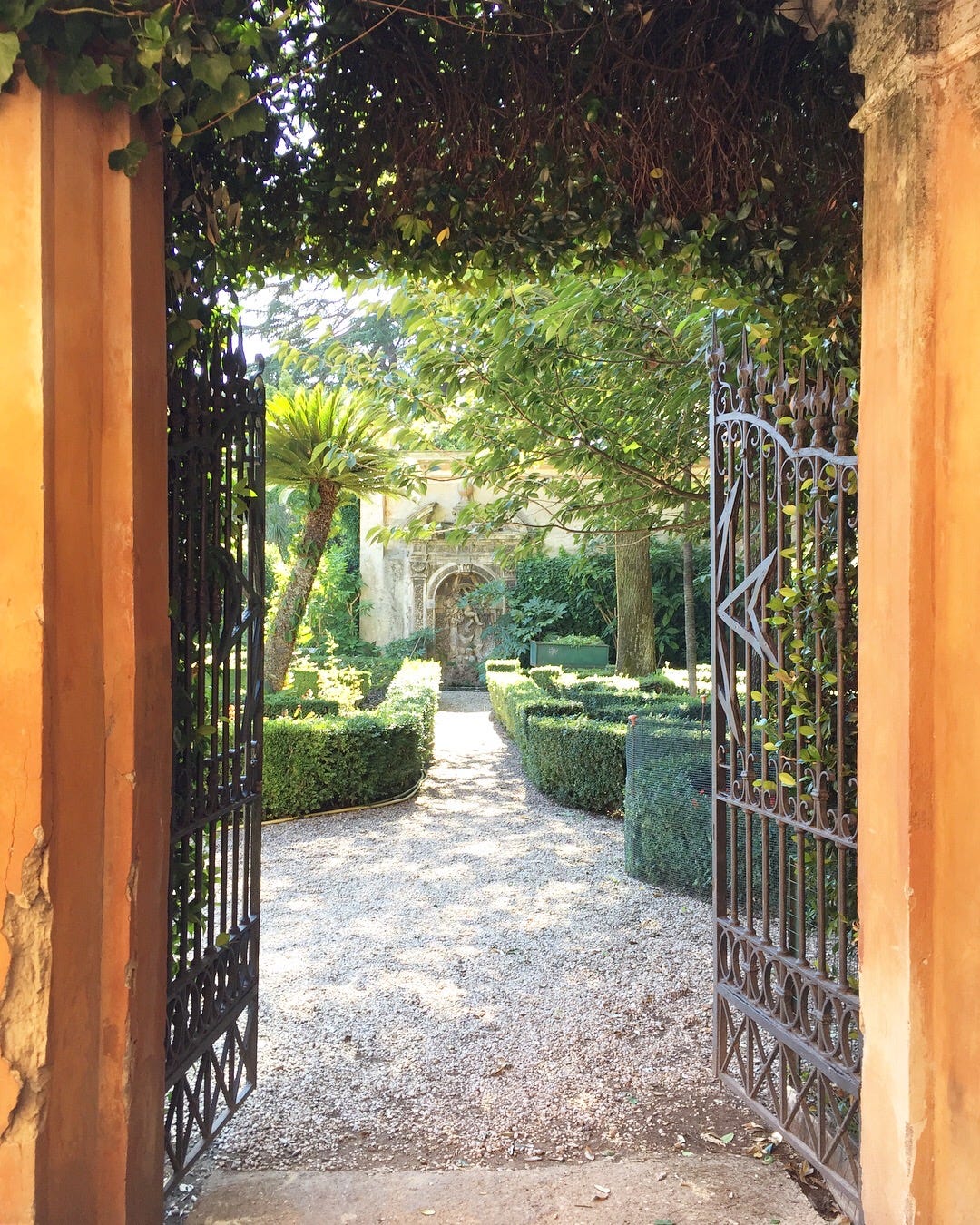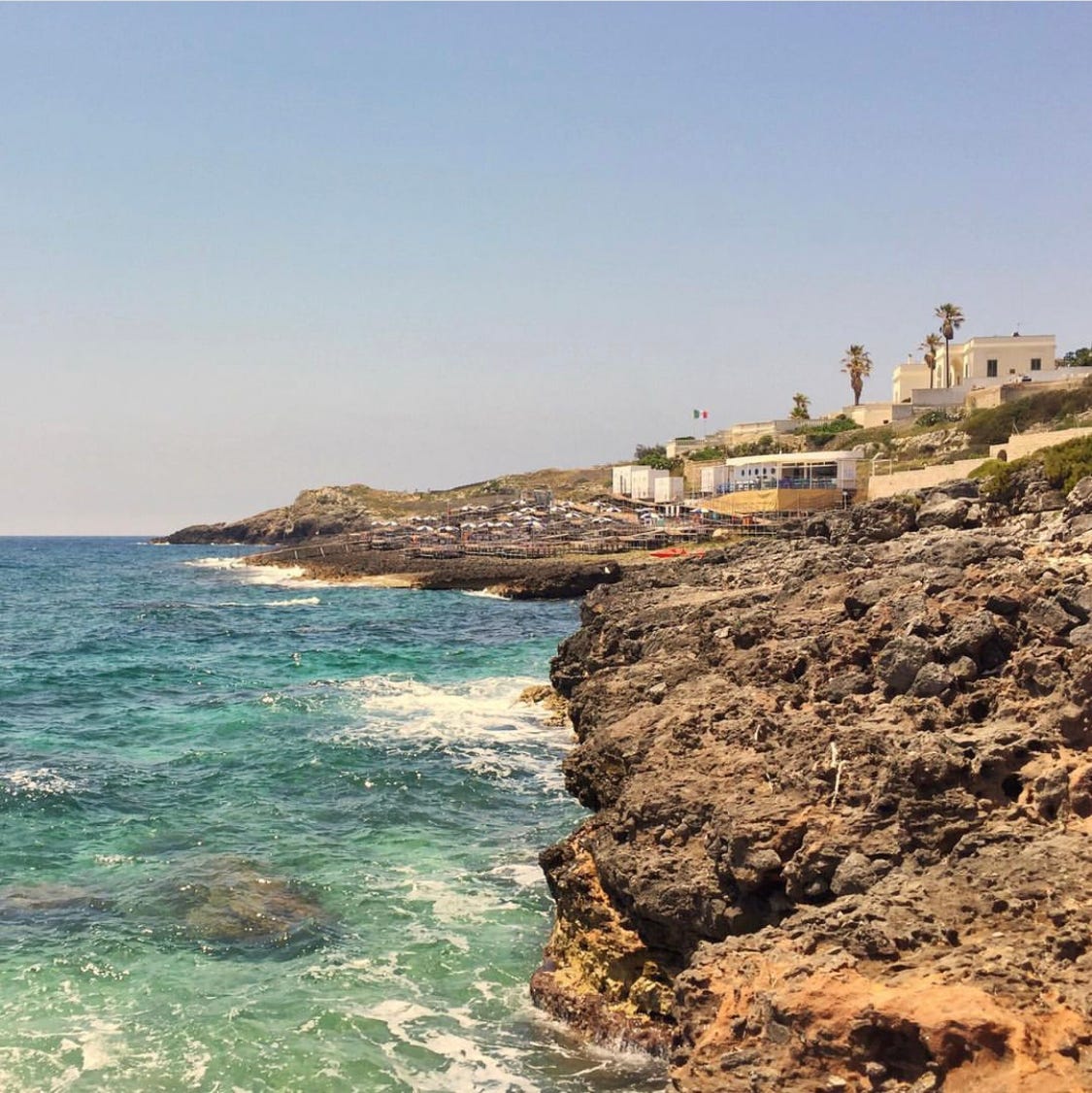A tall redhead with a bit of a British accent, Fulvio De Bonis is far from the stereotypical Roman, but he might as well be the unofficial mayor of Rome. Together with his wife Alessia Tortora and their friend Chiara Di Muoio, he founded one of the most important destination management companies in Italy. Imago Artis Travel brings their clients to some of the most exclusive places in the country. Though Imago Artis was born in Rome, the company recently opened a second office in Milan and has a network of guides and service providers all over Italy.
Through Imago Artis, I’ve done a boating excursion and walking tour in Lake Como, admired the sassi of Matera and the baroque architecture of Lecce, visited artisan studios in Florence, and gone truffle hunting in Piedmont. I’ve also accessed some of Rome’s most under-the-radar and exclusive places with Fulvio himself. He has been an expert source for many of my articles, and despite being one of the busiest people in Rome, always finds time to lend his expertise. I recently caught up with Fulvio and I’m thrilled to share his story as part of my series of interviews with entrepreneurs and creatives in Italy.
So Fulvio, I’ve known you for five years, but for my readers who don’t know you, could you explain how you, together with your wife Alessia and your friend Chiara, created Imago Artis?
Of course. In 2007, I came back from London with my girlfriend—now wife—Alessia, and together with Chiara, we decided to valorize our city, Rome. How? Through the creation of special experiences, the experiences we think should be seen by people who come on vacation to Rome. We did it with different eyes, yes, with a view to art history, but also focused on the essence of Romanness. What does it mean to be Roman?
So we put people in contact with real locals. Who is a local? Someone who can show you his apartment inside a beautiful neighborhood like Trastevere or the priest who runs a beautiful church. We give them a voice, like you give a voice to us. Initially in 2007, we began to give a voice to Roman characters. This was an enormous success because we discovered incredible storytellers and we understood the essence of storytelling: to create our own worlds and let people visiting Rome access these worlds.
Imagine being an American visiting Rome, knowing little of Rome, and going with locals who take you to meet their friends, who bring you to discover secrets, who help you understand what Roman culture is. This is the essence of Imago Artis. This is what Imago Artis wants to exalt, where we came from. This product initially was made up of guided tours of popular places, like the Colosseum and the Vatican, but we always tried to bring those places alive with our expertise and to introduce the people who live those places everyday. In our opinion, this is Imago Artis’s calling card.
So we called our company Imago like image and Artis like art, which is the image of Italy. Over the years, we began to discover new people and construct experiences around them. That's our story, up until 2016, when Imago Artis Travel became a real travel agency. Now we’re a team of 37 people and there’s a creativity department, where every day we’re researching new ideas and transform them into experiences that get offered to our clients.
But in the beginning, you guys were the guides?
In the beginning, it was me, Chiara, and Alessia. We were contacted by important five-star hotels because we were seen as young creatives and every day or twice a day we brought families to visit these places—places, as I said, like the Colosseum and the Vatican, but we always added a bit of the unknown. Slowly, word of mouth spread and became an important form of marketing.
Those 37 people you mentioned are in the offices? Or are you also counting the guides?
No, no, there are 37 people in the office.
Now you have two offices, right?
Yes, now we have an office in Rome and an office in Milan. Obviously, we start from the creativity department, move on to the travel department, which takes the ideas that have been tested and approved and offers them to the clients. Then, once the client accepts, there’s a booking department, which is in contact with guides, which we call hosts. In effect they are guides, but they’re hosts in the city.
And they’re everywhere in Italy?
They’re everywhere in Italy because we have designed our Italy. We propose all the experiences designed by Imago Artis in Italy to our clients. As I was saying, the booking department is in contact with the guides, the drivers, the helicopters, or whatever. And now we have an accommodation department because everyone asks us about where to stay, so now we’re in touch with the best hotels and villas in Italy.
And the most important part is the communication department, which interacts with journalists and creates content. Everything has to be communicated creatively. Around Imago Artis, there are 300 people if you count guides, drivers, countesses, princes, helicopter pilots, boat captains, villa owners.
And your network extends to all 20 regions of Italy?
Yes, as you know, we’re trying to push other regions, like Abruzzo, which is all but unknown to our clients. But we’re very confident that in a few years, Abruzzo will be very popular. We’re doing a lot of work to promote Sardinia now. It’s a marvelous island. Sicily now, for years, has been becoming one of the most important islands in Europe. There are some forgotten regions, like Molise. Molise has lots. But we also embrace Liguria, Piedmont, Veneto, and most Italian regions.
I would like to return to this topic later, but let’s go back to Rome for a moment because you were born and raised in Rome and I met you here. And my first experiences with Imago Artis were in Rome, like for example the fantastic tour you did for the press trip I went on at Hotel Eden when you came with a bunch of vintage Fiat 500s and brought us to visit secret places, like that house on the Aventine Hill with archeological relics inside.
Yes, the Fiat 500 represents Italian-ness. It was the economic boom of the ‘60s and ‘70s and we wanted to let people experience this Roman-ness and visit places that aren’t well known. But beyond having access to these beautiful places that not everyone can visit, you also have an added value: we put you in contact with the owner or the person who manages these places, and then there’s our storytelling, which is fundamental.

How do you discover these places? I remember that the second time we saw each other, I asked you to bring me to the garden of the Knights of Malta and you did. It’s a super exclusive place, no?
Yes, absolutely. Extremely exclusive. The secret is this: curiosity brings you to discover these kinds of places. I’ve always been a big observer. I love to observe things and people. I study the reaction on people’s faces when they’re in front of something unexpected that they didn’t imagine. That’s why our slogan is “luxury reimagined.”
Luxury is a word that isn’t used anymore. Nowadays, we use the word “authentic.” We want to take that luxury and reinvent it and propose it in a completely different way. Curiosity is the foundation of everything. If we’re curious, we discover many, many things. Rome is an inexhaustible source of exclusive places. It depends on how you present the place, how you narrate it. That’s how you generate exclusivity.
Like with the garden of the Knights of Malta, for example. When you go on Viale Aventino and you open that marvelous door where everyone stops to peer through the keyhole, it has an incredible effect. But inside, there’s someone who tells you the story—one of the most beautiful stories not just in Italy but in Europe.
In your opinion, what are the most beautiful hidden gems in Rome?
Ah, you want to make me reveal my secrets. The most beautiful hidden gems are the ones that we have yet to discover, in my opinion. There’s an extremely high percentage of Rome that is still hidden. I’ll give you an example. Now everyone knows it, but there are houses under Santi Giovanni e Paolo in Celio that are wonderful. In front, you have the Temple of Claudio. You descend and there are marvelous artificial lakes.
So even living in Rome for your entire life, you still discover wonderful places that you didn’t know?
Of course. Every day, I discover wonderful places. Every day. Sometimes I say to myself, “imagine how ignorant I am.” I feel very ignorant. Rome is an infinite encyclopedia. Even returning to the same places where I've been many times, I discover new details everyday.
Another thing that made a big impression on me is that you brought me to your parents’ house in San Giovanni. Obviously, you don’t bring all your clients there, but in my opinion it symbolizes the welcome that you give to everyone. You’re a very open, friendly person who’s easy to talk to. Have you always been that way?
You’ll never believe it, but when I was young—15, 16 years old—I was very shy. I was very friendly, but also very shy. Then when I started university, I got to know a fantastic group of friends, for example Massimo Moretti, who became a professor at La Sapienza University, and the two most important people in my life—Chiara and Alessia—with whom I undertook this voyage called Imago Artis. I was always rather timid until I started university at 18 years old. There I met people who enriched me. I realized that I had a little gift, that of storytelling and empathy. And from there we built the base of our success.
I never would have imagined it. Because when you enter a room, you have this charismatic presence. But you know, I was also very shy when I was little. I still consider myself rather shy, even if I'm a bit like you, empathetic.
I never would have called you shy. You never gave me that impression. But you see, shy people become very open, friendly people, and above all curious people.
Now your clients are some of the most famous celebrities in the world, like Angelina Jolie, Michael Jordan, and many others. Do you feel as comfortable with them as you do with normal people?
I have to be honest, I have never suffered from a problem of feeling like I can’t talk to celebrities because I feel a bit like a celebrity myself! When they ask me to sign non-disclosure agreements, I say, “Yes, but they should also sign the same thing because at the end they’ll be the ones asking for my photo or my autograph.”
Some of them post photos with you, no?
Yes, I’ll give you an example. We’ve been with Jason Momoa, who published photos. We’ve been with Gerard Butler, who published a video. There are many. They’re not reticent about having their photos taken. Like I said, they’re usually the ones asking me for photos. I never had problems with these people because they’re marvelous people, like us. I put everyone at ease, perhaps because of the charisma you mentioned, but I assure you I was very shy and very insecure. I was insecurity personified.
Incredible.
I worked on this insecurity because I had many limits. But once I was able to overcome those limits, I discovered another Fulvio.
What a story. But let’s talk for a minute about this year in Italy. Speaking with colleagues, it seems like this year is going to be really insane. There’s an enormous demand, no?
This year is busier than last year. In 2023, we’ll be much busier than 2022, which seems impossible. Many hotels are full until September or October. There’s not a day available. So it will be a very difficult year, a very peculiar year.
I also heard that hotels are 80-90% full through October. I was trying to help a couple of family friends who are coming to Rome this month, before the high season, who want to visit the Colosseum, and I couldn't find tickets. The tickets go online a month in advance and they disappear immediately.
It’s true. There are no more tickets, no access. It’s very difficult. So a company like ours has to prepare itself. Imagine how much preparation is required. We have to try to understand how many people will come to visit Italy with us. We have to calculate, trying to be as precise as possible, otherwise we’ll lose money.
Have you done these calculations?
Absolutely. This year we’ll get twice as many people as last year, most likely. I’ll let you imagine.
So for people who are planning a trip to Italy this year, do you have some advice?
My advice is to plan ahead. If they haven’t planned ahead, they should look for under-the-radar regions. For example, if they want to go to the Amalfi Coast, it’s very busy because it’s a gem. So maybe go to Sardinia instead, even if Sardinia is also very well known. There are under-the-radar places, like Abruzzo. Sorry, I always talk about Abruzzo because I have a visceral love for that region. They have to search for something a bit underrated and probably put their trust in companies that can customize their trip.
Yes, we talked a bit about this before, but I wanted to ask you for some ideas. In your opinion, what are some places where travelers can escape the crowds? Underrated places, like Abruzzo or Sardinia, but in Sardinia instead of going to the Costa Smeralda, you have to look for more under-the-radar beaches.
The south of Sardinia is marvelous, it’s still unspoiled. We talked about Abruzzo. Tuscany, at this point, is completely full. I would like to tell you also about the little islands off the coast of Sicily, or Calabria. Calabria unfortunately has a problem with infrastructure, but sooner or later it will emerge because it has incredible landscapes. It’s one of the most beautiful regions of Italy, like the native region of my grandfather, Puglia. Nowadays, everyone goes to Puglia, but I would go a bit further south toward the tip of Puglia—the heel, as they say.
Where the two seas meet.
Exactly. Then there are many places. There’s Molise, as I was saying. It’s hard to organize a last minute vacation, but if one studies, one can find something.
Puglia, for example, was I don't want to say undiscovered because obviously Italians went, but I remember that a few years ago, around 2015 or ‘16 when I worked at Travel + Leisure, they published a big feature on Puglia and at that time it wasn’t very well known among Americans. Now it’s much more well known. Last year, I went to Polignano a Mare and on the boat, the skipper told us that in July and August the little beach has standing room only.
Mamma mia! But can I tell you something? Polignano a Mare, Savelletri, and those places in the north of Puglia weren’t valorized at all. Who valorized Puglia? Who believed in Puglia? It was Aldo Melpignano, who built Borgo Egnazia and began to give value to this land. And today Borgo Egnazia is one of the most beautiful places in the world because a massive amount of work was done. We have to give credit to Aldo Melpignano. And that valorization continues because now everyone wants to go to Puglia. That’s what it means to create work, opportunity, space, value in the land.
Maybe he should go open something in Calabria!
Look, the big entrepreneurs like him have to do this. They have to give value to these places. They are the starting point. They have to choose a team of important minds and give them space to do something in undervalued places like Calabria. I’m convinced that Aldo Melpignano would do very well in Calabria if he was given the opportunity.
Now he also has a hotel in Cortina.
Yes, the Hotel de Len. In Cortina, there’s Cristallo, but there aren’t a lot of five star hotels. And also there, he’s giving value. If you go to see Cortina, today it’s exploding with tourism. So these people must absolutely have an important role in the luxury tourism industry.
They’re the pioneers.
Exactly. They’re visionaries. A bit like us, with the experiential part. The experiential part, together with the accommodations, is fundamental. It’s all connected.
Thank you so much for another fantastic conversation.
Thank you. It’s always a pleasure to speak with you.
This interview has been translated from Italian and edited for length and clarity.
Further Reading
For Nuvo, I wrote this piece about touring Rome’s secret locations with Imago Artis Travel.
When I wrote about how to plan a trip to Venice during Carnival for AFAR, Fulvio was my expert source.
He was also one of my sources for this article in the Globe & Mail about how the travel industry’s concerns about overtourism gave way to an undertourism paradox during the pandemic.
In this article for the Points Guy about why you should visit Matera, I wrote about my tour with Imago Artis guide Fabio Congedo and quoted Fulvio about the magic of Matera.
During that trip, Fabio also led me and my family on a guided tour of Lecce, which I wrote about in this guide to planning the perfect road trip in southern Italy for Architectural Digest.
For more about Puglia, which we discussed in this interview, check out issue #15.
For more ideas of under-the-radar places to visit in Italy, take a look at issue #14, in which I shared my list of 23 places in Italy to inspire your 2023 travels.









